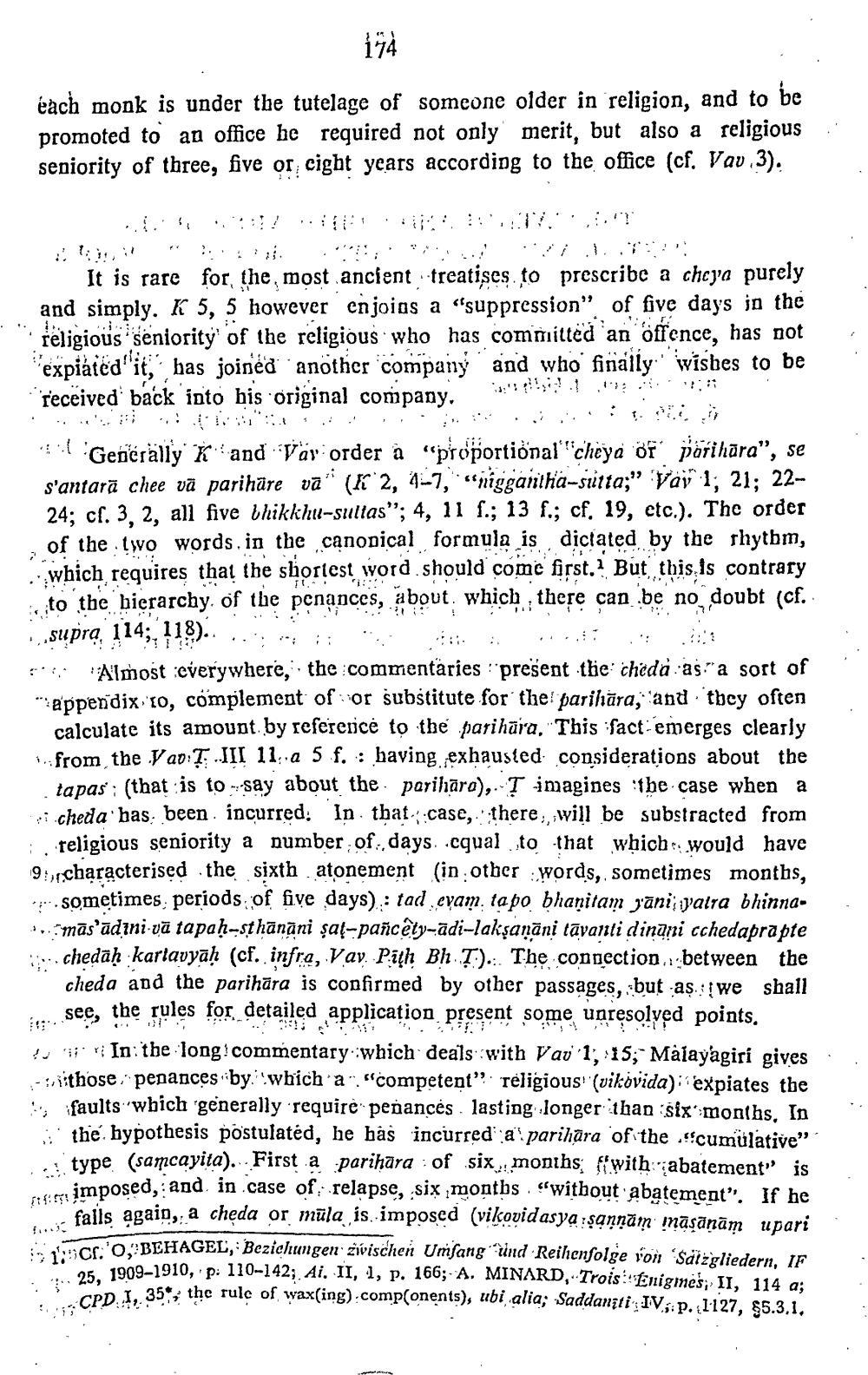________________
144
each monk is under the tutelage of someone older in religion, and to be promoted to an office he required not only merit, but also a religious seniority of three, five or cight years according to the office (cf. Vav.3).
It is rare for the most ancient treatises. to prescribe a cheya purely and simply. K 5, 5 however enjoias a "suppression" of five days in the
religious seniority of the religious who has committed an offence, has not "expiated it," has joined another company and who finally wishes to be received back into his original company. :" >,!.!. !:*
" Geñérally K and var order à "proportional cheya of pärihāra”, se s'antarā chee vä parihäre vā" (162, 4-7, "nigganthia-sutta;" Vajal; 21; 2224; cf. 3, 2, all five bhikkhu-sultas”; 4, 11 f.; 13 f.; cf, 19, etc.). The order of the two words. in the canonical formula is diclated by the rhythm, which requires that the shortest word. should come first.? But this is contrary
to the bierarchy of the penances, aboutwhich there can be no doubt (cf. . ,,supra, 114; 1 )...; ; ii . . . . . 3 Almost everywhere, the commentaries present the cheda as a sort of *** a'pperdix.ro, complement of or substitute for the parihära, and thcy often
calculate its amount by reference to the parihara, This fact emerges clearly * -- from the Yao: T: III 11 2 5 f. : baving, exhausted considerations about the
tapas : (that is to say about the parihara), I imagines the case when a cheda bas been incurred: In that case, there , ;will be substracted from
religious seniority a number of days..cqual to that which would have 9, characterised the sixth atonement (in other words, sometimes months, ... sometimes, periods of five days): tad evam. tapo bhanitam jāni yalra bhinna
mās’ādini-vā tapaḥ-sthānāni şat-pancêty-adi-lakşaņāni tāyanti dinani cchedaprapte ... chedāḥ kartavyāḥ (cf. infra, Vav. Path Bh ?.). The connection between the
cheda and the parihāra is confirmed by other passages, but as we shall ... see, the rules for detailed application present some unresolved points. do' In: the long commentary which deals with Vav''1, 15; Malayagiri gives -:ithose, penances by.' 'which a "."competent”. Teligious! (vikovida): expiates the ,faults which generally require" penances. lasting longer than six months, In
the hypothesis postulatéd, he has incurred a parihāra of the 'cumulative” type (samcayita). First a parihara : of six monihs; fi with: abatement is imposed, and in case of relapse, six months. "without abatement". If he falls agaio, a cheda or müla is imposed (vikovidasya şannām māsānām upari POBEHAGEL, Beziehungen zwischen Umfang und Reihenfolge von 'Saizgliedern. If
1909-1910, P: 110-142; Ai, II, 1, p. 166;- A. MINARD, Trois Énigmes; II, 114 a: DD I, 35*, the rule of wax(ing) components), ubi alia; Saddangti IV; p. l-127, $5.3.1.
25, 1909-1910... ::;; CPD 1,356, the t




